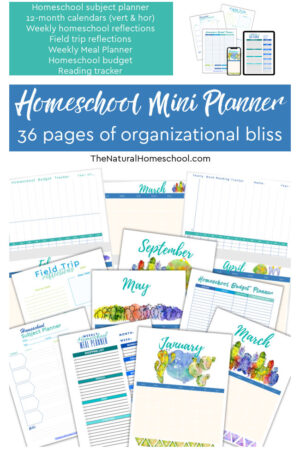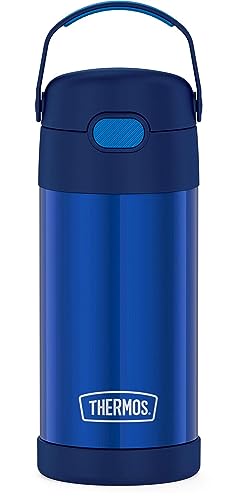Hydration is crucial for everyone, especially children, who are more prone to dehydration due to their higher activity levels and different physiologies compared to adults. According to a prominent Harvard study, more than half of all children and adolescents in the U.S. are not getting enough hydration, likely due to insufficient water intake, a situation that could significantly impact their physical health, and cognitive and emotional functioning.
The study also highlights disparities in hydration status, indicating that Black children and adolescents were at a higher risk of inadequate hydration than their caucasian counterparts, and, more broadly, boys were at a higher risk than girls.

The prevalence of inadequate hydration among U.S. children and adolescents aged 6 to 19 years was 54.5%, according to data from the National Health and Nutrition Examination Survey covering the years 2009 to 2012; this research further identified demographic disparities, showing significantly higher risks for inadequate hydration among boys and non-Hispanic Blacks compared to girls and non-Hispanic whites, respectively.
Ensuring that your child drinks enough water is essential for their overall health, cognitive function, and physical performance; still, children may not always recognize the signs of dehydration for themselves, making it vital for parents and caregivers to be aware of the indicators. Here are several signs that your child may not be drinking enough water:
1. Decreased Urination and Dark-Colored Urine
One of the most straightforward signs of dehydration is a noticeable decrease in urination. If your child is using the bathroom less frequently than usual or if their urine is dark yellow or amber in color, it’s a clear indication they need to drink more water. A well-hydrated child should have light yellow or almost colorless urine.
2. Dry Mouth and Bad Breath
Dehydration reduces saliva production, leading to a dry mouth, which can cause discomfort, and even lead to bad breath. If your child frequently complains of dry mouth or if you notice their breath is not as fresh as usual, increasing their water intake can help.
3. Thirst and Cracked Lips
While this may seem obvious, children often ignore thirst signals or mistake them for hunger. Consistent thirst and visibly cracked or dry lips are signs your child needs to consume more fluids regularly. This could also be a good sign that you might need to take your child to the hospital for a check-up to ensure that no other underlying conditions impact their health.

4. Fatigue and Irritability
Dehydration can significantly impact energy levels and mood. If your child seems unusually tired, lethargic, or irritable without a clear reason, it could be due to not drinking enough water. Proper hydration can improve their energy and mood.
5. Headaches and Dizziness
Dehydration can cause headaches and dizziness in children. If your child complains of these symptoms, especially during hot weather or after physical activities, it’s a sign they need to rehydrate.
6. Poor Concentration
Water is essential for optimal brain function; a lack of hydration can lead to difficulties in concentrating, memory problems, and a decrease in cognitive performance in school.
7. Decreased Physical Performance
During physical activity, a dehydrated child might tire more quickly, show decreased strength and coordination, or experience muscle cramps; adequate hydration is key to maintaining endurance and performance in both sports and play.

8. Dry, Flaky Skin
Dehydration can also affect the skin, making it appear dry, flaky, or less elastic. You might notice that your child’s skin doesn’t bounce back quickly when pinched lightly, which is a test known as skin turgor.
9. Sunken Eyes or Cheeks
Severe dehydration can lead to a sunken appearance in the eyes or cheeks. This is more common in cases of significant fluid loss but is an important sign that immediate rehydration is necessary.
10. Rapid Heart Rate or Breathing
In severe cases, dehydration can lead to an increase in heart rate and rapid breathing as the body tries to maintain blood pressure and oxygen flow; this is a less common symptom, but one requires urgent attention.
You might also like:
-
Sale!

Reusable Printable Homeschool Mini Planner (36 pages)
$18.00$9.99 Add to cart- Young Living Vitality Drops for Better Hydration
- How to Get Children to Stay Hydrated
- Episode 52: Young Living Vitality Drops for Better Hydration
- How to Get Kids to Drink Water
SOS Hydration Kids Paw Patrol Electrolyte Drink Mix (Mixed Berries)
 THERMOS FUNTAINER 12 Ounce Stainless Steel Vacuum Insulated Kids Straw Bottle, Blue
THERMOS FUNTAINER 12 Ounce Stainless Steel Vacuum Insulated Kids Straw Bottle, Blue CHILLOUT LIFE Stainless Steel Water Bottle for Kids School: 12 oz Double Wall Insulated Cola Bottle
CHILLOUT LIFE Stainless Steel Water Bottle for Kids School: 12 oz Double Wall Insulated Cola Bottle Water: The Coolest Drink Around
Water: The Coolest Drink Around Nephrology for Kids: A Fun Picture Book About the Kidneys and Renal Physiology for Children (Gift
Nephrology for Kids: A Fun Picture Book About the Kidneys and Renal Physiology for Children (Gift Did a Dinosaur Drink This Water? (Wells of Knowledge Science Series)
Did a Dinosaur Drink This Water? (Wells of Knowledge Science Series)
Latest Posts
- Discovering the Magnificence of the Montessori Environment
 Aesthetics in Montessori environment serve several purposes beyond just aesthetics. They play a key role in establishing an atmosphere that satisfies the senses, aids in the development of order in young brains, and organically fosters a love of beauty.
Aesthetics in Montessori environment serve several purposes beyond just aesthetics. They play a key role in establishing an atmosphere that satisfies the senses, aids in the development of order in young brains, and organically fosters a love of beauty. - Levelling Up Your Career
 Levelling up your career is a lot easier if you pay attention and follow these four easy steps.
Levelling up your career is a lot easier if you pay attention and follow these four easy steps. - Craft Activities for Kids ~ Paper Weaving Projects
 In this post, we are looking at some really fun paper weaving projects that your kids will find a lot of fun!
In this post, we are looking at some really fun paper weaving projects that your kids will find a lot of fun! - Inspired by Montessori Curriculum for Toddlers PDF (225 pages)
 Let’s be completely honest for a minute, guys, in regards to the best Montessori curriculum for toddlers PDF. I think we can all agree that homeschooling a toddler or having a toddler at home while we homeschool our older kids can be as easy or as daunting as you want…
Let’s be completely honest for a minute, guys, in regards to the best Montessori curriculum for toddlers PDF. I think we can all agree that homeschooling a toddler or having a toddler at home while we homeschool our older kids can be as easy or as daunting as you want… - Online Learning Takes a Stand Against Traditional Educational Methods
 Online Learning Takes a Stand Against Traditional Educational Methods
Online Learning Takes a Stand Against Traditional Educational Methods














Leave a Reply